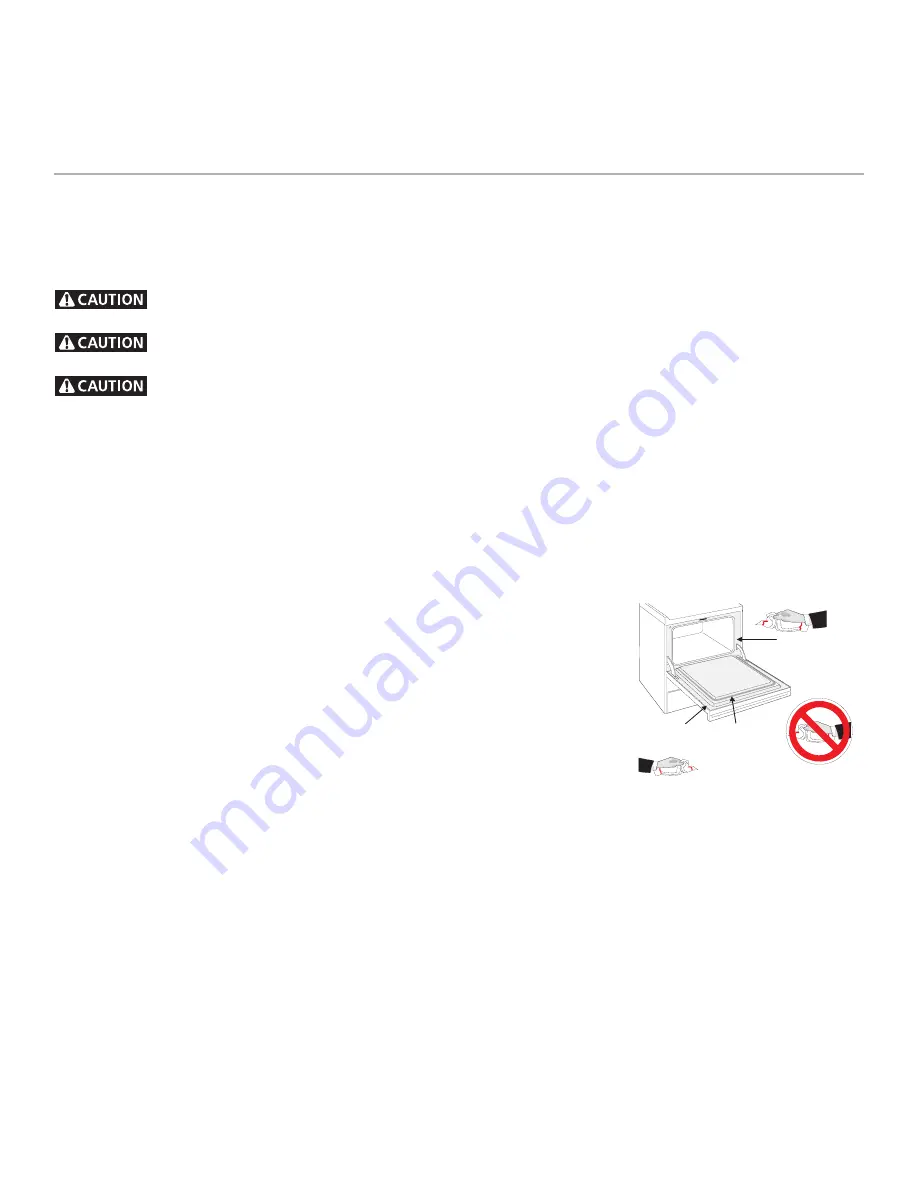
18
Oven Cleaning
Cleaning the Self-Clean Oven
Adhere to the following cleaning precautions:
- Allow the oven to cool before cleaning.
- Wear rubber gloves when cleaning any exterior parts of the oven manually.
During the self-clean cycle, the outside of the wall oven can become very hot to the touch.
DO NOT
leave
small children unattended near the appliance.
The health of some birds is extremely sensitive to the fumes given off during the self-cleaning cycle of any
range. Move birds to another well ventilated room.
Before cleaning any part of the oven, be sure the electronic oven control is turned off or else push
CANCEL
pad. Wait until the oven is cool.
DO NOT
use commercial oven cleaners or oven protective coatings in or around any art of the self-cleaning oven.
DO NOT
clean the oven door gasket. The gasket on the oven door is essential for a good seal. Care should be taken not to rub, damage
or move the gasket.
DO NOT use any cleaning materials on the gasket. Doing so could damage it. DO NOT use
aluminum foil to line the oven bottom
. This may affect cooking or foil could melt and damage the oven surface.
A self-cleaning oven cleans itself with high temperatures (well above cooking temperatures) which eliminate soil completely
or reduce it to a fin powdered ash you can which away with damp cloth.
Preparing the Oven for Self-Cleaning
1. Remove all excess spillovers in the oven cavity before starting the self-cleaning cycle.
To clean, use hot soapy water and a cloth. Large spillovers can cause heavy smoke or
fire when subjected to high temperatures. DO NOT allow food spills with a high sugar or
acid content (such as tomatoes, sauerkraut, fruit juices or pie filling) to remain on the
surface as they may cause a dull spot even after cleaning.
2. Clean any soil from the oven frame and the door liner (see illustration). These areas
heat sufficiently during self-cleaning cycle to burn soil on. Clean with soap and water.
3.Remove the broiler pan and insert, all utensils and any foil. These items do not
withstand high cleaning temperatures
4. Oven racks may be left in the oven or may be removed. If they go through the clean
cycle, their color will turn slightly dull. After the cycle is completed and the oven has
cooled, rub the sides of the racks with wax paper or a cloth containing a small amount
of baby oil or salad oil. This will make the racks glide easier.
What to Expect During Cleaning
While the oven is in operation, the oven heats to temperatures much higher than those used in normal cooking. Sounds of
metal expansion and contraction are normal. Odor is also normal as the food soil is being removed. Smoke may appear
through the oven vent, located on the top of the control panel.
If heavy spillovers are not wiped up before cleaning, they may flame and cause more smoke and odor than usual. This is
normal and safe and should not cause alarm. If available, use an exhaust fan during the self-cleaning cycle.
NOTE:
A smoke eliminator in the oven vent converts most of the soil into a colorless vapor.
Setting the Controls for Self-Clean Cycle
For the setting of the clean cycle, refer to Timer or Electronic Oven Control Guide.
Care and Cleaning of Stainless Steel (Some Models)
Some models are equipped with stainless steel exterior parts. Special care and cleaning are
required
for maintaining the
appearance of stainless parts. Please refer to the table provided at the beginning of the
General Care & Cleaning
section in
this Use & Care Guide.
General Care & Cleaning
Do
Not
Hand
Clean Seal
Do
Hand
Clean Frame
Do
Hand
Clean Door
















































